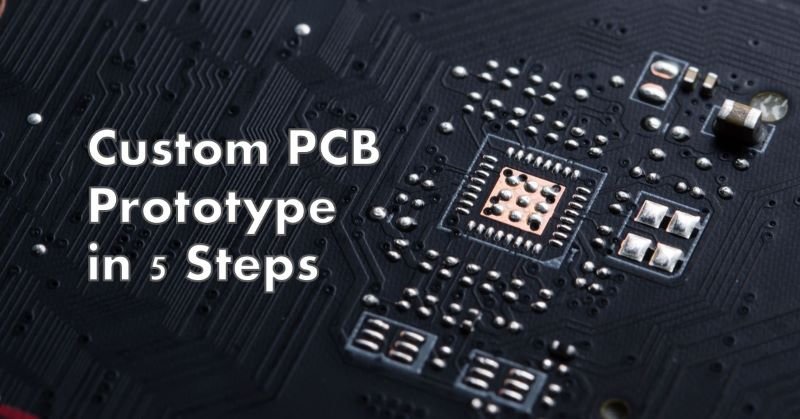PCB Prototype Process: 5 Steps To Create a Custom PCB
Creating a custom printed circuit board (PCB) involves a complex design process that requires careful planning and attention to detail. Whether you’re using PCB design software or crafting one by hand, balancing various factors is crucial to ensure the PCB functions correctly. Here’s a guide to help you manage these factors using five essential steps to create a custom PCB.
Steps for Creating a Custom PCB
Let’s focus on the 5 steps for creating a custom PCB:
Step 1: Spacing Is Everything
The design process begins with understanding the importance of spacing. Proper spacing between components is critical for several reasons:
- Cost Efficiency: Adequate spacing can save money by reducing the need for rework and scrap.
- Heat Management: Good spacing helps prevent overheating by allowing better airflow around components.
- Signal Integrity: Proper spacing reduces signal resistance and interference, ensuring reliable operation.
Step 2: Start With the Components
Begin your PCB design by placing the components. This foundational step ensures that your PCB will meet its functional requirements. Here are some tips:
- Functionality First: Ensure each component is placed in a way that meets the board’s operational needs.
- Leave Space: Allocate enough space around each component for traces and to prevent overheating.
- Optimize Layout: Group components logically to minimize trace lengths and improve signal flow.
Step 3: Focus on Traces
Traces are the pathways that connect components on the PCB, allowing signals to flow through the board. Consider these points for effective trace design:
- Keep It Short: Shorter traces reduce signal travel time and improve performance.
- Direct Paths: Aim for direct paths to minimize wasted space and potential signal interference.
- Manage Interference: Be aware of potential signal interference and resistance when designing trace paths.
Step 4: Overheating Prevention
Preventing overheating is a major consideration in PCB design. Here’s how to address it:
- Material Selection: Choose materials that can withstand high temperatures and provide good thermal conductivity.
- Spacing and Layout: Properly space components to allow for adequate cooling.
- Use of Vias: Incorporate drill holes and vias to dissipate heat and improve thermal management.
Step 5: PCB Prototyping and Fabrication
Once your design is finalized, the next step is fabrication. Here’s what to consider:
- Prototype First: Create a prototype to test and validate your design before moving to full production.
- Fabrication Services: Utilize experienced PCB fabrication services for reliable and high-quality manufacturing.
- Iterate as Needed: Use feedback from prototypes to refine your design and address any issues.
Conclusion
By following these five steps, you can streamline the process of creating a custom PCB and improve your design outcomes. Proper spacing, component placement, efficient trace design, overheating prevention, and prototyping are all essential elements of successful PCB design. If in doubt, always opt for prototyping to ensure your design meets all requirements before committing to full-scale production. These steps will help you create effective and reliable PCBs for your projects with minimal issues.
